Microsoft Project is still a corporate classic, yet its licence price, steep learning curve and long roll-out time are pushing companies to look for Microsoft Project alternatives. Small and midsize businesses, agencies and product teams need flexibility, quick configuration and transparent pricing. Below you will find the ten best Microsoft Project substitutes for 2025 plus a feature-and-price comparison table. Special attention is paid to Worksection — a modern solution where all advanced tools are available in every plan with no hidden charges.
Why do users look for Microsoft Project alternatives?
Although powerful, Microsoft Project often misses the mark for 2025 workflows. First, licensing remains expensive: the cloud Project Plan 3 costs about $30 per user per month, while the perpetual Professional edition sells for $1 129 per seat. Second, mastering the interface takes time and specialised courses, delaying project kick-off. Third, many teams run on agile methods that rely on Kanban boards and instant task re-ordering — capabilities that Microsoft Project does not provide natively. Finally, modern cloud tools integrate more easily with email, messengers and finance systems, which is critical for distributed teams.
Criteria for choosing a Microsoft Project alternative
Before diving into the tools, define what to measure:
- View flexibility. Kanban boards, Gantt charts and calendars should be fully synchronised so everyone sees the same data, whatever view they prefer.
- Time-to-value. The platform should go live in days rather than weeks and require no external consultants.
- Collaboration. Comments, file sharing, version control and granular permissions let you involve clients and contractors safely.
- Automation & integrations. Triggers, API and webhooks reduce manual work and connect Gmail, Slack, Jira (a Jira analogue) and finance apps.
- Cost. Transparent pricing with no extra charge for essentials (Gantt or time-tracking) keeps TCO low.
Best Microsoft Project alternatives in 2025
Worksection
Worksection stands out because every core module — Kanban board, Gantt chart, calendar and built-in time tracker — is included in every plan. Teams therefore save up to 30 – 50% of the budget they would normally spend on “advanced” add-ons elsewhere. Creating a task takes seconds: add a description, due date and assignee, and the item instantly appears on the Kanban and in the Gantt. Each task contains comments, checklists, file uploads and time logs. Granular permissions let you invite clients and show them only what matters. For teams of up to 20 users, the “Team” plan costs $49 per month and covers everything. Russian and Ukrainian support speeds onboarding, and the migration wizard imports projects from Microsoft Project in minutes. As a result, Worksection is the optimal Microsoft Project alternative for SMBs, digital agencies and product teams that need rapid rollout and predictable pricing.
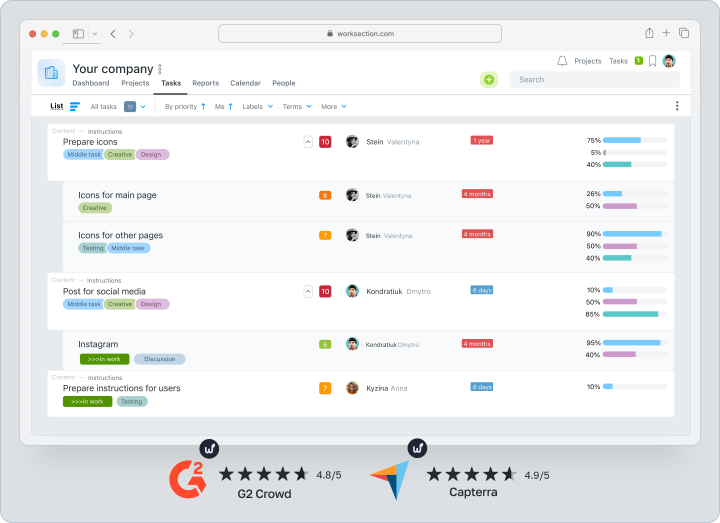
ClickUp
ClickUp offers a flexible Spaces → Folders → Lists hierarchy and lets you combine tasks in almost any configuration. Views include Kanban, Gantt, calendar, mind-map and workload. Extras such as Docs, “if – then” automations and unlimited custom fields add power. The downside is interface overload: new users need time to grasp the terminology, and full Gantt or dashboard formulas require the Business plan (from $19 per user per month). If you want maximum customisation and can pay for extra features, ClickUp is a capable Microsoft Project replacement.
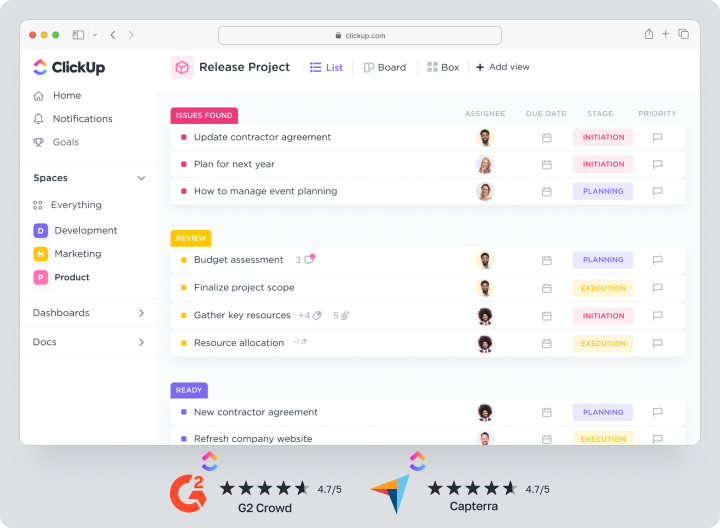
Wrike
Wrike positions itself as an enterprise platform with deep analytics and adaptive workspaces. Its strong point is real-time reporting and resource-load dashboards, close to Microsoft Project in scope. Weak spots are the price of higher tiers — Business Plus with Gantt, AI assistant and OKR management starts at $34.90 per user — and limited Russian-language live support. Wrike suits large departments that need end-to-end analytics but can be overkill for small firms.
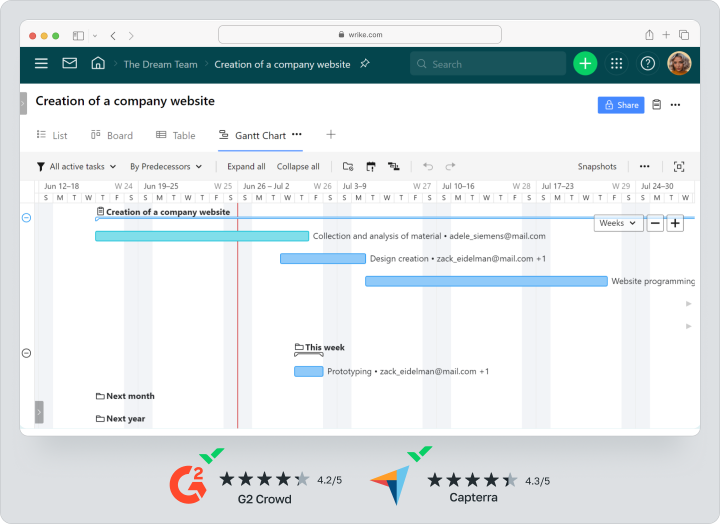
Monday.com
Monday.com’s colourful boards engage creative and marketing teams with eye-catching status columns and activity feeds. To handle complex dependencies, you must enable “critical path” and “predecessors”, features unlocked on the Pro tier (from $19 per user). Still, Monday integrates smoothly with Slack, Google Workspace and Zapier, making it a valid Microsoft Project substitute where bright visualisation outweighs strict task hierarchies.
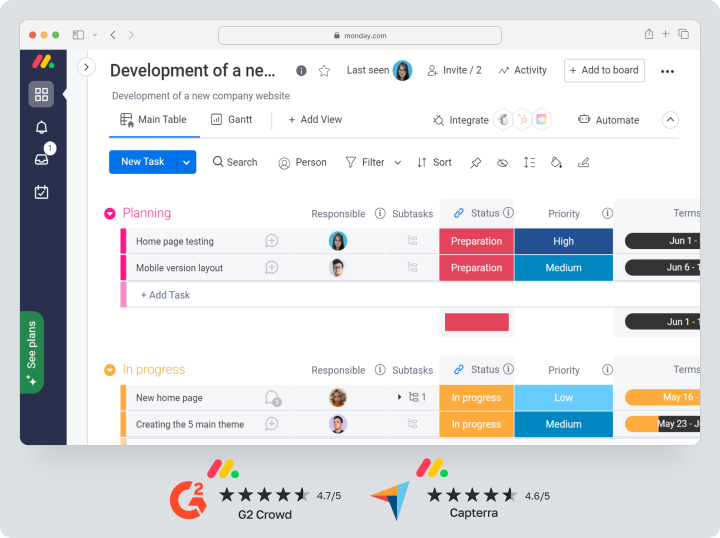
Asana
Asana is known for simplicity: tasks live in projects, and users switch between list, Kanban or timeline. Its Gantt-style “Timeline” arrived recently and is lighter than Microsoft Project for multi-level dependencies. Yet for product and IT teams, where priorities shift fast, Asana remains a powerful task manager. The free plan for 15 users gives a quick start, while the Business tier (from $24.99) adds portfolios and workload management.
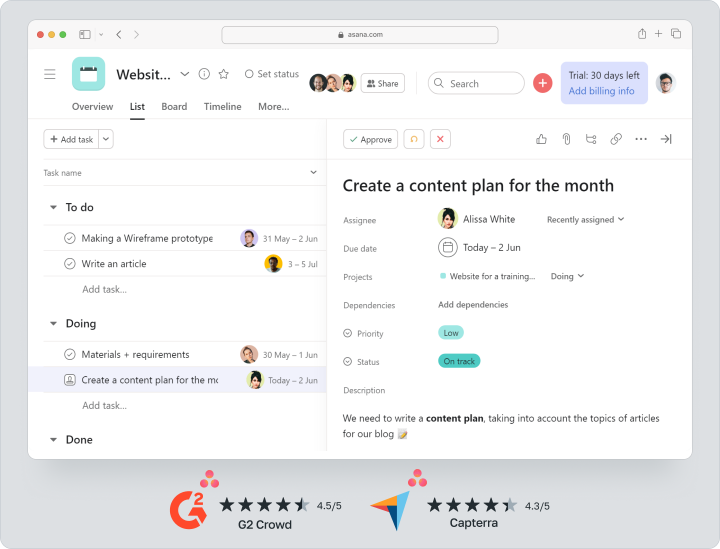
Smartsheet
If your colleagues love Excel, Smartsheet is a natural step. It resembles an online spreadsheet where each row can appear on a Kanban board or Gantt. Formulas, cross-sheet references and alerts simplify data migration. The Pro plan costs $9 per user, but resources and critical path require Business ($32). Interface clutter on large datasets and the lack of a some languages UI are the main drawbacks.
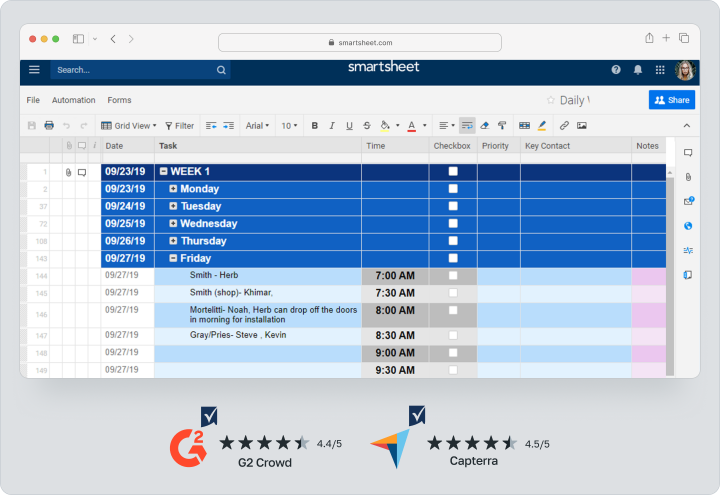
Notion + Timeline
Notion turns every page into a mini-database, and its timeline view yields a basic Gantt. The upside is total customisation — you can build CRM, wiki and task tracker in one workspace. Weaknesses include no native time tracker and limited task dependencies. For small IT or content teams seeking a flexible knowledge base, Notion is a fine Microsoft Project analogue; larger projects will need external time-tracking integrations.
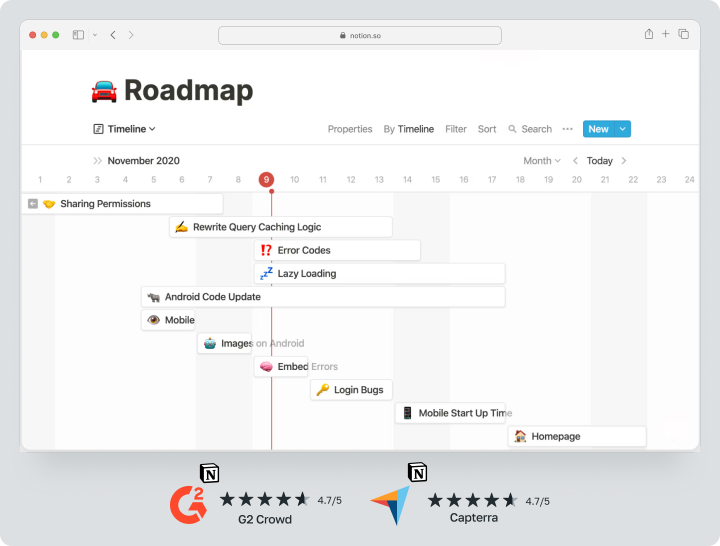
Trello (with Power-Ups)
Trello is the de-facto Kanban standard: card drag-and-drop is perfect for getting started. Power-Ups add Gantt, custom fields and Butler automation. The free plan limits Power-Ups, while the Standard tier ($5 per user) removes the cap. However, the board-and-card structure complicates multi-layer dependencies, so Trello is usually a lightweight Microsoft Project alternative for small teams.
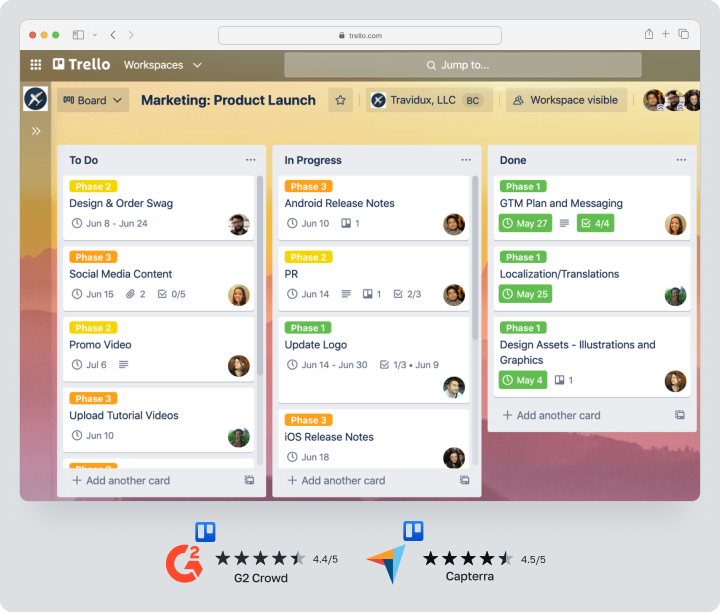
GanttPRO
GanttPRO focuses on Gantt charts: task creation, dependencies, critical path and budget tracking take minutes. The interface is in Russian, and export to PDF/PNG is handy for reports. Prices start at $7.99 per user annually, making GanttPRO an affordable Microsoft Project substitute for those who mainly need Gantt. Missing Kanban and agile modules mean you can’t run sprints without third-party tools.
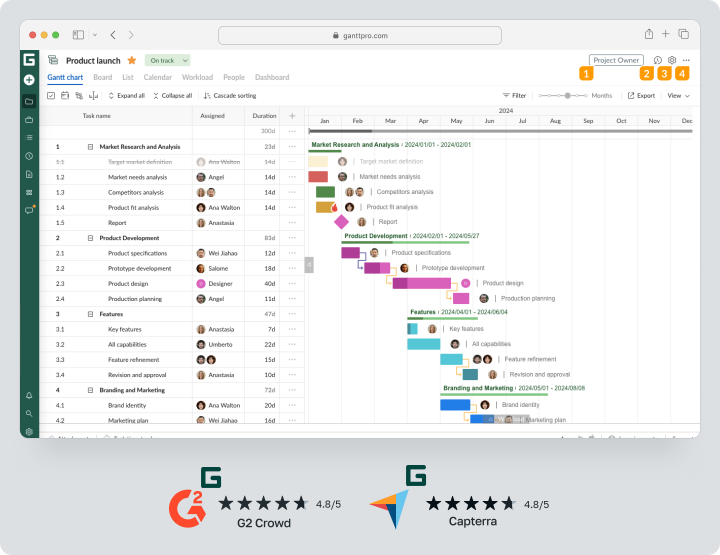
TeamGantt
TeamGantt combines a simple Gantt with a Kanban view but targets small groups: the free plan is limited to three users. The paid Standard tier (from $24 per project manager per month) unlocks unlimited guest users, workload reports and time logging. For agencies that must build a schedule and show it to a client quickly, TeamGantt is a cost-effective Microsoft Project analogue; heavy automation, as in Worksection or ClickUp, is absent.
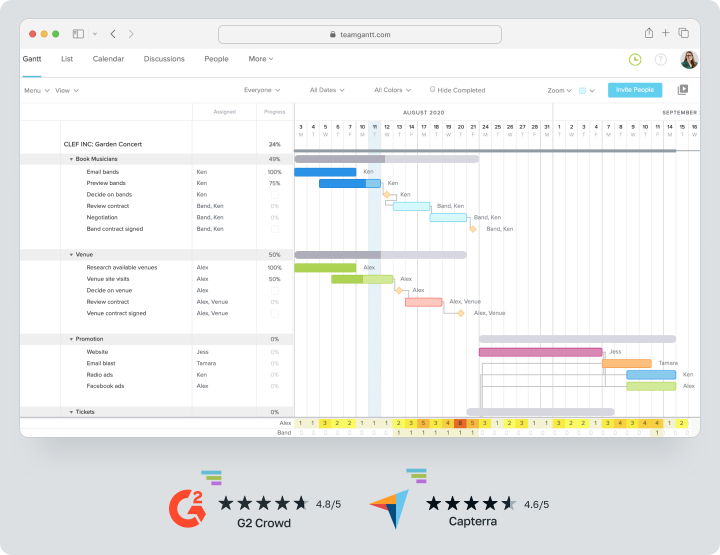
Comparison table of the best Microsoft Project alternatives
| Platform | Kanban Board | Gantt Chart | Time Tracker | Client Access | Russian UI | Entry-level Price (monthly) | Best for |
| Worksection | Yes | Yes | Yes | Granular | Yes | $49 for up to 20 users | SMB & agencies |
| ClickUp | Yes | Yes | Limited | Yes | Partially | $7 per user | Power users |
| Wrike | Yes | Yes | Yes | Yes | Email only | $9.80 per user (Team) | Enterprise |
| Monday.com | Yes | Pro only | No | Yes | No | $8 per user | Marketing & design |
| Asana | Yes | Timeline | No | Yes | No | Free / $10.99 (Premium) | IT & products |
| Smartsheet | Grid view | Yes | No | Yes | No | $9 per user | Spreadsheet fans |
| Notion | Database | Timeline | No | Yes | Yes | $8 per user | Content & R&D |
| Trello | Yes | Plug-in | Plug-in | Yes | Yes | Free / $5 (Standard) $7.99 per user | Start-ups |
| GanttPRO | No | Yes | Yes | Partial | Yes | $7.99 per user | PM pros |
| TeamGantt | Kanban+Gantt | Yes | Yes | Guest users | No | $24 per manager | Agencies |
Which platform should you choose in 2025?
The final choice depends on team size, budget and desired flexibility. If you want an all-in-one tool with no hidden upgrades, Worksection covers planning, visualisation, time control and client access from day one. ClickUp and Wrike suit companies ready to invest time in deep customisation. GanttPRO or TeamGantt are logical when a classic Gantt chart is the main requirement. And if you need a pure Kanban with the lowest entry barrier, Trello or Asana will do the job.
Frequently Asked Questions (FAQ)
Which Microsoft Project alternative is best for small business?
Small businesses need quick adoption and transparent cost. Worksection wins thanks to a flat $49 monthly price for the whole team and a full feature set with no hidden limits. If you only need a Kanban board, Trello’s free tier can work short-term, but you will soon outgrow its plug-in limits.
Are there free Microsoft Project alternatives?
Yes. Trello, Asana and ClickUp all offer free plans with basic features. Yet those tiers limit storage, integrations or view types, so serious portfolios typically hit the ceiling within a month or two. Worksection provides a 14-day trial with all features; after that it’s paid, but without any surprise add-ons.
How is Worksection different from Microsoft Project?
Microsoft Project has advanced dependency grids and a powerful resource matrix, yet it can be over-engineered for day-to-day work in small or mid-size teams. Worksection starts in an hour with no training, delivers Kanban, Gantt and time tracking on every plan and costs dramatically less — $49 a month versus E = mc^2… just kidding :), but the savings are real, especially for 20 – 30 users. Plus, clients can access projects for free, reducing external licence spend.
Conclusion
Microsoft Project remains an industry benchmark, yet in 2025 the market offers flexible and affordable alternatives. ClickUp, Wrike and Asana satisfy the needs of large and tech-savvy teams. However, if you want a modern platform with full functionality, quick onboarding and Russian-language support, Worksection is the smart choice. Try it free and see how much easier project management can be.